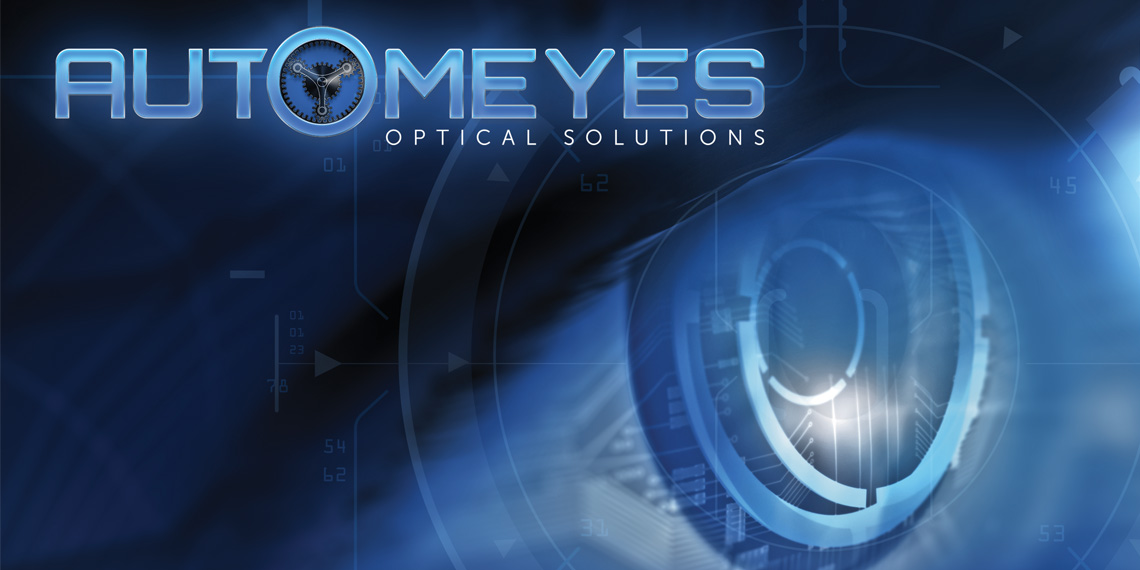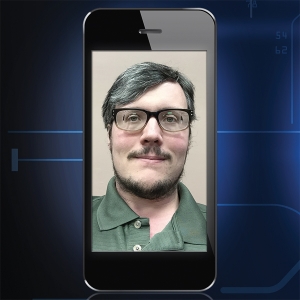
So, online sales are the ‘big bad’ that everyone seems to be talking about. Regardless of whether you think it’s good, bad, or you don’t care about it at all, it’s definitely one of those things that’s only going to get more and more popular. That means you’re probably only ever going to see more and more people talking about it, or even asking you to help them order their glasses from a website instead of ordering them from you.
We Have the Technology…
Up to this point, the largest problem with it has been taking PDs and seg heights. I’m sure you’ve had people ask you for this information, and you knew exactly why they were asking at the time, too. For some reason, they think you don’t know that they are going to go order online instead of ordering from you. For those of you that decided to not help them with these numbers, you can probably assume that the patient did their best to either guess or measure themselves what these numbers would be. You knew that because that’s what they would tell you when they later brought you the online purchased eyewear because it didn’t work, and they couldn’t see. The question here, of course, is what happens when we get to a point where technology gets good enough to get that PD and seg height as accurate as you can get it? In that scenario, the customer doesn’t come back. They have no reason to – the online pair worked, and it was cheap and easy. When technology gets to that point – do you know what you’re going to do to retain your customers? I’m asking you this not because of some far-flung apocalyptic fear that the sky is falling, rather from the perspective of one that has seen what technology can do, and that it’s here.
So Easy, A Caveman Could Do It
The easier something is, and the more natural it feels, the easier and more quickly the adoption is by consumers. When they don’t have to do something complicated or silly, they are much more likely to trust it and believe in it. Thanks to the techniques used by a company like Automeyes, taking a PD and seg height is exactly that – simple. They only need a picture (like a selfie) to take measurements, and that’s it. What’s more is that this isn’t like what everyone else does. Everyone else makes the consumer humiliate themselves somehow, and Automeyes makes it natural.
I’m sure you’ve seen these other ‘humiliation devices’ before – ones that want you do hold up a credit card to your forehead, or cut out a piece of paper, or some other ridiculousness. I don’t know about you, but I don’t really feel comfortable making myself look like an idiot to order a pair of glasses online. If my seven-year-old starts laughing at me when I try and place an order for something, then yeah, I’m going to think twice about it.
So, imagine then how easy it becomes when a person can use a picture – ANY picture – and get accurate PD and seg height measurements. Not only that, you don’t need expensive equipment, or any other ‘hocus pocus’ in order to get good, reliable measurements. How does that change the game?
Mutually Assured Destruction
For those of you that might be worried about this technology, you can breathe a sigh of relief. At least, for right now you can. It seems that the major issue here is that the whole process is too easy. It’s too easy for major companies to want to use it, because they are scared of what it can do if they unleash it. Big Optical, for instance, could certainly use something like this to bolster their online sales numbers, but even they don’t want to risk the damage it could cause. By ‘damage’, I’m referring to their relationship with eyecare professionals. If they were to use something that was this good, and this easy to use, their major source of income (i.e. you) would get so upset, that Big Optical would have all kinds of issues getting people to sell their products.
That’s not to say that it isn’t coming – it just isn’t coming right this second. We do have other companies adopting this technology to use in ways besides purely online. Early this year, for example, Harley Davidson began using Automeyes in some of their stores in order to sell Rx eyewear right there at the dealership – no optician required. That kind of application, to me, almost seems like a license to print money. Someone going to a Harley store is there because they like their Harley. Do you think they aren’t also going to want their Rx in an official Harley Davidson frame, regardless of what it costs? Especially if they can just place the order right there at the dealership with little to no hassle?
Professional Applications
Now, I don’t want you to think that this technology is out there to kill eyecare professionals – it’s certainly not. In fact, this technology can add valuable documentation and verification of measurements that have been taken. The way it is now, if you take a PD and seg height – you record it, and that’s that. But how do you know if those measurements were correct? How do you know if you took it from the pupil, or the bottom of the eyelid? Or somewhere else? Because I’m a professional and I always do it the same way, so I know, you say. Well then, what if you weren’t the one that took it? What if it was the new guy? How do you know then?
With Automeyes, you can archive the exact points used to take these measurements. It can become part of the record of the patient, and allow you to know that the measurements were correct. You can go back and make sure that the measurements were done correctly. It also makes comparing new and old measurements much easier, as you have the prior picture of the patient to use as a basis for comparison.
This type of technology also makes it easier for independent eyecare practices to go online themselves, trying to stay ahead of the curve of Big Optical and other online retailers. Many practices are looking at employing their own online outlet, that way their customers can still shop in the comfort of their own home, but retain the store and in-person service. This way the customer can be sure they get the service, and can also move the shopping to their terms (like 2a.m. in their pajamas) instead of needing to go into a store. This also helps capture the sale by giving the patient what they want (easy service) coupled with what they need (professional service)
.
Now What?
So, now that you know this kind of technology not only exists, but that it’s being used successfully, what do you do about it? Well, there’s a few options. You can certainly keep on doing what you’re doing, there’s nobody stopping you. What might be a good thing to keep in the back of your mind is that this highlights the need to make yourself stand out. The more that people can get online, the less that they need you – unless you can show them why they need you. If your value stops at being able to use a PD stick – you’re going to have problems. You need to plan for what happens when people don’t need to ask you for their PD. Right now, that’s a warning for you that they are going to go buy online. Pretty soon, you aren’t going to even get that warning – they can just get their PD online. This technology should be a motivator to you to bolster your skills before they get out the door, or give them a reason to come back. You could explore things like frame adjustment plans, or other value-added services you can do if they buy their eyewear somewhere else. When the steam drill comes to take your place – are you going to let it, or are you going to stand up to the challenge?
Does it Work?
So, the real, critical question here is whether this actually works, and how good is it, really? As with most things in life, the only real way we can know whether or not it works is by trying it out. I was able to get the opportunity to try out Automeyes for myself, and I think the results speak for themselves. Now, I wanted to try some different frames to see if I got similar measurements, and then see how those measurements compared to each other, as well as what they would be from a real person doing the measurement.
Firstly, I had to take a picture of myself wearing both frames, then upload them into the Automeyes web interface. I used two wildly different shapes here to see if that had any bearing on what our final results would look like. That’s why we have more of a larger rectangular shape [Frame A], and the smaller, rounder, Harry Potter-esque frame as our choices [Frame B]. After uploading the images, I needed to enter the frame dimensions in a separate dialogue. I was told that it was possible for this to be set up to use a frame library, which would make it easy to just select the frame and auto-fill the measurements. At any rate, it was only a few mouse clicks later that I was able to get the results of the calculations. For our purposes here, I indicated that I wanted a progressive lens, but it also has options for measuring single vision and bifocals as well.
‘Frame A’ Results
PD and Seg for Frame A.
So, we’ve figured out that the PD is correct – what about the seg height? Here, it tells us it’s at 19.5mm for both eyes. When we compare that with “real” measurements, we ended up with the right eye at 19.5mm, while the left was only 19mm. So that goes to show that…it works? That doesn’t seem possible – there has to be something wrong, some kind of fluke, right? Maybe we need to try another frame.
‘Frame B’ Results

PD and Seg for Frame B.
Similarly, looking at the seg height, Automeyes give me a seg height of 19mm and 18mm for the right and left, respectively. The “real” seg height on this pair ended up as 18.5mm and 18mm. Similar to our results with the first pair – a very small difference that seems to indicate that this does, indeed work.
Now, you should keep in mind that this is by no means a scientific sample size, but it does show that there’s a lot of potential here. When a patient can get good, accurate frame measurements from nothing more than a selfie – that’s a big game changer for online eyewear. Technologies like this are going to continually be improved and become more common. As with everything – don’t take my word for it, look for yourself at what’s out there, and figure out how you can use it to make your business even better.
Special thanks to Automeyes for their help with this article.
automeyes.com
– Oscar Goldman

